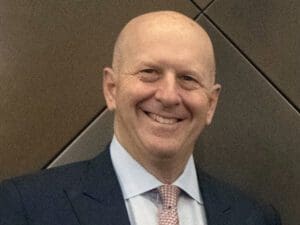Goldman Sachs’s dreams for consumer banking started so well.
Their launch of Marcus in 2016 turned heads. As one of the most trusted firms on Wall Street, the company felt at the time its strengths in risk management and technology would give them the edge for a consumer-facing product.
Yes, it was new territory, but so was the developing age of digital finance.
“Digital technology is making large brick and mortar branches questionable… The traditional distribution strengths of some of the large banks, in my view, have become legacy costs,” said Harit Talwar, Head of Marcus by Goldman Sachs, at the time.
Already, firms like Lending Club had made their mark. Fintech had shown its worth, and Goldman had been at the forefront, seeding budding success stories. The shift to digital had also allowed lenders to develop models based on formulas and quantitative metrics, a shift that Talwar felt played into Goldman’s hands.
“Leveraging risk management, data analytics has always been in our DNA.,” Talwar said.
Development was swift, and two years later, Marcus had over $35 billion in deposits. It’s heavyweight status in the financial system had paid off, and Marcus had already been linked with big names, boosting its status as the “platform of the future.”
However, despite the growth and extensive investment, by August 2022, Goldman was yet to break even on Marcus. Worse, the company had accumulated an expected $1.2 billion loss.
Now, with rumors that the giant will be offloading their partnership with Apple, it seems that every one of its hopes for consumer banking has been dashed.
A consumer-facing bet that did not pay off
Goldman Sach’s foray into the consumer banking sphere was not uncalled for. While it had survived the 2008 financial crisis, regulation imposed in its aftermath had required action.
“The introduction of the Dodd-Frank Act’s Volcker Rule prevented retail banks from speculative proprietary trading for profit,” wrote Farhad Huseynli, an analyst at the Fintech Blueprint. “(It) forced banks to look for alternative revenue streams.”

At the time, the then CEO of Goldman Sachs, Lloyd Blankfein, felt the bank’s value was dwarfed by its rivals due to its lack of legacy customer infrastructure. The C-Suite convened and decided a consumer banking product was best suited and steered clear of “cannibalizing” existing products. A few years later, Marcus was born.
With the appointment of David Solomon as CEO in 2018, Marcus came into its own, forming the crown jewel of Solomon’s growth strategy.
“Three years ago, when we had our first investor day, we laid out a clear strategic plan for the firm,” said Solomon during a CNBC Squawk Box interview earlier this year. “We laid out a plan to invest in our core businesses. We pointed to four areas that we thought were interesting opportunities for the firm to grow; Asset Management, Wealth Management, Transaction Banking, and also Consumer Banking.”
Goldman Sachs was on a high and seemingly had money to spare. Consumer Banking, as a major part of its strategy, received a bump in investment, the pinnacle of which was the soon-to-be-ill-fated acquisition of BNPL provider, GreenSky.
RELATED: Global newsletter: Goldman Sachs faces significant loss from GreenSky
Initially focused on consumer lending and deposits, Marcus expanded to include savings and investment products.
“They did great at the start with Marcus, reaching $100B in deposits quickly,” said Huseynli. “But their expected profit projections were flawed. Very flawed.”
Huseynli explained that he felt an area of significant loss within Marcus’ model had been the Robo-advisory product, Marcus Invest. The investment product had been a long time coming. He explained that Goldman’s “backward” approach to Robo-advisory resembled a wealth management service, involving experts and shying away from full automation.
“We can deduce that the contribution margin per customer is significantly higher than that of an automated robo advisor needed to break even,” he wrote. While the approach of the product was marketed as “wealth management for the little guy,” Huseynli said wealth management, as executed by Marcus Invest, was “only financially viable with a pool of high-net-worth clients.”
“I think we tried to do too much too quickly, and as a result, our execution in some areas of this wasn’t good,” said Solomon.
“There are parts of it that we executed very well…I think the important thing that you do is you look at what you’ve done, you learn, you adapt, you correct, you move forward.”
However, one by one, the building blocks of Marcus and Goldman’s consumer business have continued to fall.
Apple’s partnership loss could mark the final piece.
Within this landscape, the partnership with Apple in 2019 with the creation of the Apple Credit Card had been ticking along, expanding on financing options throughout 2019-2022.
While the Apple Card, on the surface, had been a resounding success, with over six million cardholders by 2022, cracks had begun to show.
In mid-2022, Goldman announced that it was facing a probe by the CFPB. The investigation was centered on the bank’s credit card account practices. The Apple card’s rapid growth and Goldman Sach’s struggle to keep up in an area they were fairly new to were said to hold the blame. One of the main areas of focus of the investigation had been Goldman’s handling of credit card disputes, the level of which the company had been reportedly unprepared.
Towards the end of last year, despite evidence of losses exceeding $1.2 billion stemming from the credit cards, Solomon announced an extension of the partnership to span until 2029.
“It’s a very, very strong partnership where there’s a lot of opportunity,” he said at the time. The union has since birthed a BNPL product as well as a High Yield Savings account.
However, hot off the back of rumors that the company was looking to sell GreenSky at a significant loss, The Wall Street Journal reported that Goldman was looking to offload the partnership to American Express.
In late 2022 the company said they were relocating the operations, along with the partnership with General Motors and GreenSky, to a new unit called Platform Solutions as part of a major reshuffling of the consumer business. In January 2023’s earnings call, it was disclosed the Platform Solutions unit had continued to accrue increasing losses throughout 2020-2022.
While the talks are said to be ongoing, with no distinct resolution in sight, the shift could mark the definitive end of Goldman Sachs’ consumer-facing aspirations. The sale of GreenSky (although still not finalized) leaves Apple as one of the bank’s last major takes on the sector.
If the partnership is indeed offloaded, the Marcus savings account, Goldman’s original consumer product, will be the only one left standing.


